Affordable PC Fans: Top Picks for Every Budget
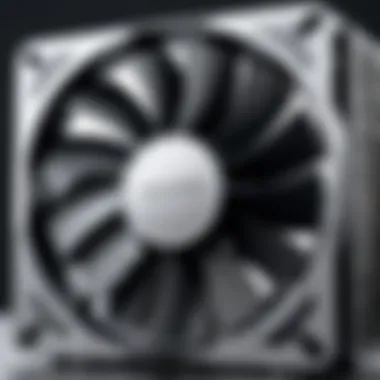
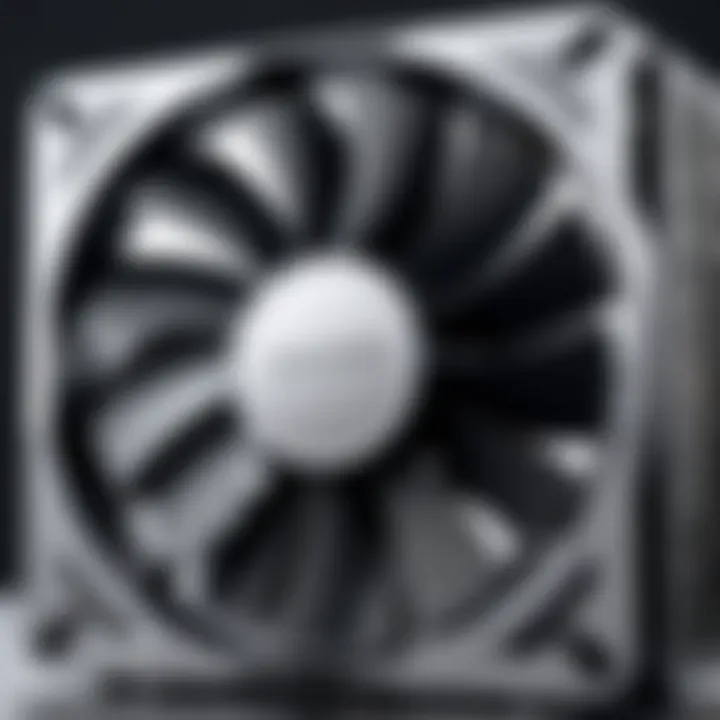
Intro
When building or upgrading a PC, many enthusiasts focus on powerful components like GPUs and CPUs, but often forget about the vital role of cooling solutions. An efficient cooling system is crucial not just for longevity but for optimal performance as well. However, with a plethora of fans in the market, it’s essential to sift through the options to find the best balance between price and performance. This guide is aimed at those seeking affordable PC fans without compromising on quality or efficacy.
Selecting a PC fan may seem straightforward, yet there are several factors to consider. From size and airflow to noise levels and durability, getting it right can mean the difference between a smooth gaming experience and overheating components. In this article, we’ll explore the available choices, highlight some of the most recommended affordable options, provide tips for maintaining your fans, and equip you with the knowledge needed to make an informed decision. Let’s dive into the essential features to look for when choosing the right fans for your setup.
Essential Fan Features
When shopping for a PC fan, several key features should command your attention:
- Size: Fan size affects airflow and compatibility. Standard sizes include 120mm and 140mm. Ensure that the fans fit in your case.
- Airflow: Measured in cubic feet per minute (CFM), airflow indicates how much air the fan can move. Higher CFM ratings mean better cooling.
- Noise Level: Expressed in decibels (dB), consider fans with lower noise levels if you prefer a quieter environment. Some fans are specifically designed to be silent, which can be ideal for gaming rigs.
- Bearing Type: This can influence the fan’s lifespan and noise. Sleeve bearings are quieter but tend to wear faster, whereas ball bearings last longer and provide better performance.
When purchasing, customers should also think about aesthetics. RGB lighting can enhance the visual appeal of a setup, but it may come at a higher cost.
Recommended Affordable PC Fans
To assist you in selecting the best fans for your budget, here are a few models worth considering:
- Cooler Master SickleFlow 120 V2
A reliable choice, this fan offers good airflow and decent noise levels, making it perfect for most users. Plus, it often comes in stylish designs with RGB options. - ARCTIC P12 PWM PST
Known for its exceptional price-to-performance ratio, the ARCTIC P12 balances noise and airflow superbly. Great for users who desire performance without compromise. - be quiet! Pure Wings 2 120mm
This fan is famed for its silent operation and reliable performance. If noise is a significant concern, this option should be on your radar. - Corsair Air Series AF120
Corsair is a name that many know and trust. This fan brings good airflow and aesthetics, making it suitable for both gamers and regular users.
To enhance this list, it’s always useful to check customer reviews on platforms like reddit.com for real-word insights on product performance.
Maintenance Tips
Regardless of how good your fans are, neglect can lead to decreased performance over time. Here are some maintenance tips to keep them spinning smoothly:
- Dusting: Regularly clean dust and debris from your fans, as this can hinder airflow and increase noise. Using a can of compressed air is often the most effective method.
- Checking connections: Ensure that the fan connectors are securely fastened and are free from damage. A loose connection can lead to power issues.
- Replacing when needed: If you notice a significant drop in performance or unusual noises, it might be time to replace the fan.
Moreover, healthy air circulation is crucial, meaning organizing cables and ensuring unobstructed airflow are crucial for cooling efficiency.
Prologue to PC Fans
In the computational world, where temperatures can soar like a summer afternoon, PC fans serve a crucial purpose. They are not just mere accessories but the unsung heroes of cooling systems. Without them, even the most high-end rigs could face overheating. When assembling a computer, understanding the significance of these components can make all the difference.
Choosing the right fans can lead to improved performance and better longevity for your system. With hundreds of options on the market, knowing what to look for can be daunting. The goal of this section is to shed light on the fundamentals of PC fans, examining their critical roles in sustaining optimal temperatures, which is especially important for both gaming and essential tasks.
The Role of PC Fans in Cooling Systems
Every PC requires adequate cooling to function efficiently. The role of fans within these systems is twofold: they not only facilitate airflow but also help in dissipating heat generated by the CPU, GPU, and other components. When components like these are stressed during intense gaming sessions or heavy workloads, they produce heat, which can lead to throttling and decreased performance if not managed properly.
PC fans work by replacing hot air with cooler air in enclosures, creating a steady flow. In simple terms, the basic cycle involves drawing in cooler air from the outside and expelling warm air into the environment. The design of the case and the placement of the fans within it determine the effectiveness of this cycle. Uninterrupted airflow ensures that all parts of the system maintain a cooler temperature. It’s worth mentioning that without proper fan setups, even the most powerful processors can struggle due to heat issues, which is something enthusiasts need to consider closely.
Understanding Airflow and Static Pressure
When diving into the technical details of fans, two key terms come into play: airflow and static pressure. Airflow, measured in cubic feet per minute (CFM), indicates the volume of air a fan can move. High airflow is essential for overall cooling performance, particularly in systems packed with multiple components or in cases with restricted airflow.
On the other hand, static pressure refers to a fan's ability to push air through obstacles, such as filters or radiators. A fan designed with high static pressure might not move as much air as one focused solely on airflow, but it compensates by effectively pushing air through tight spaces. Choosing between airflow and static pressure often depends on your specific setup. For instance, if one's building a water-cooled gaming rig, fans that excel in static pressure tend to perform better than those engineered for aesthetics alone.
Key Takeaway: Understanding both airflow and static pressure will help you balance cooling needs with noise levels, a critical consideration for gamers and power users.
In summary, grasping the fundamentals of PC fans can lead to more informed purchases when setting up or upgrading your rig. The complexities of airflow and cooling dynamics lay the groundwork for diving deeper into selecting the best fans suited to your needs. Let's continue to explore criteria that make PC fans effective and affordable.
Criteria for Choosing Affordable PC Fans
When considering affordable PC fans, several factors come into play. Navigating through the vast sea of options requires a keen understanding of what makes a fan not only budget-friendly but also effective in maintaining your system's temperature. The right balance between performance and cost can enhance your gaming experience and protect your hardware.
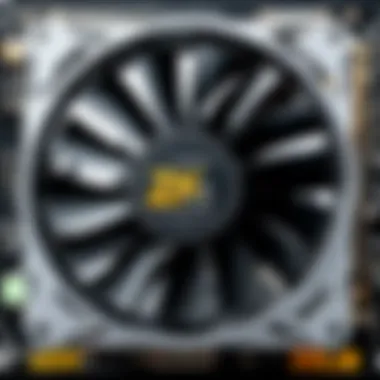
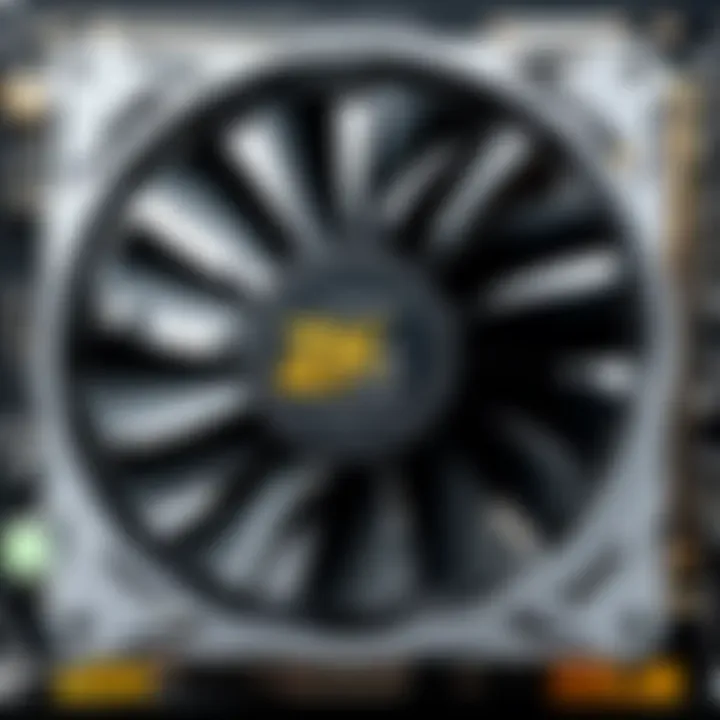
Within this section, we’ll explore critical elements that will steer your decision-making process:
- Noise Levels: The Quiet Operation Factor
- Size and Compatibility with Existing Cases
- RPM and Performance Metrics
Understanding these criteria helps in making an informed purchase, allowing you to enjoy both functionality and peace of mind.
Noise Levels: The Quiet Operation Factor
One of the prime concerns for users—especially those who like their gaming sessions uninterrupted—is noise. Fans come with different dBA ratings that indicate their sound level. A lower dBA means quieter operation, which is crucial if your setup is close to your ears.
Take, for instance, a fan rated at 20 dBA. It might seem whisper quiet compared to a model at 35 dBA, which could sound like a windstorm in a small room. Consider implementing fans with PWM (Pulse Width Modulation) technology, which allows the fan to adjust its speed according to temperature, reducing noise when you’re not pushing the machine.
"A silent setup can be a game changer—there’s nothing quite like the sound of your gameplay without the noise of your cooling system!"
Size and Compatibility with Existing Cases
Size isn’t merely a number—it’s a matter of fit. Before buying any fan, it’s important to measure the spaces in your case to avoid the all-too-common problem of a fan that just won’t fit. Fans generally come in standard sizes like 120mm or 140mm, but verifying the compatibility with your existing case beforehand ensures a hassle-free installation.
Furthermore, certain radiators or cooling systems might require specific fan types. It pays off to consult the manufacturer’s specifications to avoid any compatibility issues down the road. Remember, cramming a larger fan into a tighter space won’t lead anywhere good—think efficiency, not just size.
RPM and Performance Metrics
Revolutions per minute (RPM) is another key metric when evaluating fan performance. Higher RPM usually indicates better airflow, but it’s important to strike a balance. A fan running at 2000 RPM might cool effectively but will churn out more noise. On the flip side, a fan at 1200 RPM might be quiet and gentle, but it might struggle with cooling under higher loads.
Understanding the relationship between RPM and your usage—whether for light tasks or heavy gaming sessions—is essential. Consider fan models that provide configurable settings or monitoring systems that can inform you when it's time to increase the speed, ensuring optimal temperatures without excessive noise.
In summary, being mindful of noise levels, size compatibility, and RPM could help you pinpoint the ideal fan without stabbing at blind luck. Make your choices wise and informed, as your entire setup depends on effective cooling to perform well.
Best Affordable PC Fans on the Market
In this section, we dive into a crucial aspect of maintaining an optimal computing experience — selecting the best affordable PC fans. The significance of this topic not only lies in enhancing your system's cooling efficiency but also in finding a balance between performance and cost. Many users overlook the vital role fans play in their setups, often settling for cheaper, less efficient options that can lead to overheating and decreased performance over time.
Budget-friendly models provide essential cooling without straining your wallet, making them a solid choice for both casual users and gaming enthusiasts. When navigating the myriad options available, it’s important to consider factors such as longevity, noise output, and airflow capabilities.
Top Recommendations for Budget PC Fans
Model A: Performance Overview
When considering budget choices, one standout is the Arctic P12 PWM. This fan brings efficiency to the forefront, offering a maximum airflow rate of around 210 m³/h. A key characteristic that separates it from the pack is its balanced performance, allowing it to operate quietly while pushing air effectively. This makes it a popular choice for system builders seeking reliable cooling without excessive sound.
What sets the Arctic P12 apart is its custom-engineered rotor design, which optimizes airflow while minimizing turbulence. Although the lower RPM may lead to slightly reduced cooling performance compared to some pricier rivals, its overall value and efficiency in performance make it a formidable contender in its price range.
Model B: Efficiency and Cost
Next up is the Cooler Master SickleFlow 120 V2 fan, known for its harmony of performance and cost-effectiveness. With a price point that’s hard to beat, it pushes out around 62 CFM of airflow, making it a significant option for users wanting to keep their systems cool without cluttering their budget. Its high-quality bearings enhance its lifespan, promising durability and reliability even during extended usage.
A unique aspect of the SickleFlow 120 V2 is its RGB lighting feature, which adds an aesthetic aspect that many gamers appreciate. However, it’s prudent to note that while this fan is efficient, it might produce a notable noise at maximum speed, which could be a factor for users sensitive to sound levels during more quiet tasks.
Model C: User Reviews
Basing decisions on what others experience can be pivotal, and the Noctua NF-P12 redux is frequently hailed in user reviews. This fan shines in terms of overall satisfaction, with many users commending its near-silent operation and excellent build quality. It circulates air at a rate of around 92 CFM, yet its noise level remains strikingly low, making it a preferred choice for many seeking peace in their gaming or work setups.
The Noctua fan features a unique anti-vibration design, which minimizes sound transmission. Though a bit pricier than other options, its longevity and performance routinely garner praise. Critics often argue that it lacks the flashy looks of some RGB counterparts, but for those who prioritize efficiency above aesthetics, this option is a clear winner.
Comparison of Popular Brands
When shopping for PC fans, it's helpful to size up different brands against each other. Brands like Noctua, Arctic, and Cooler Master each offer distinct features — from Noctua's emphasis on quiet operation to Arctic's innovative designs for budget-conscious consumers. Understanding these differences can help users make informed choices tailored to their specific needs and preferences.
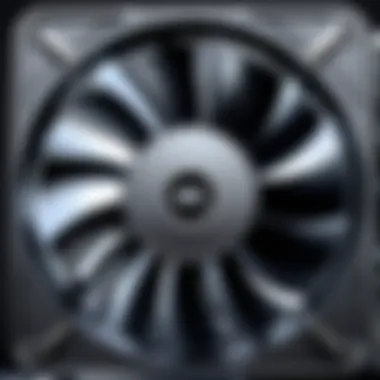
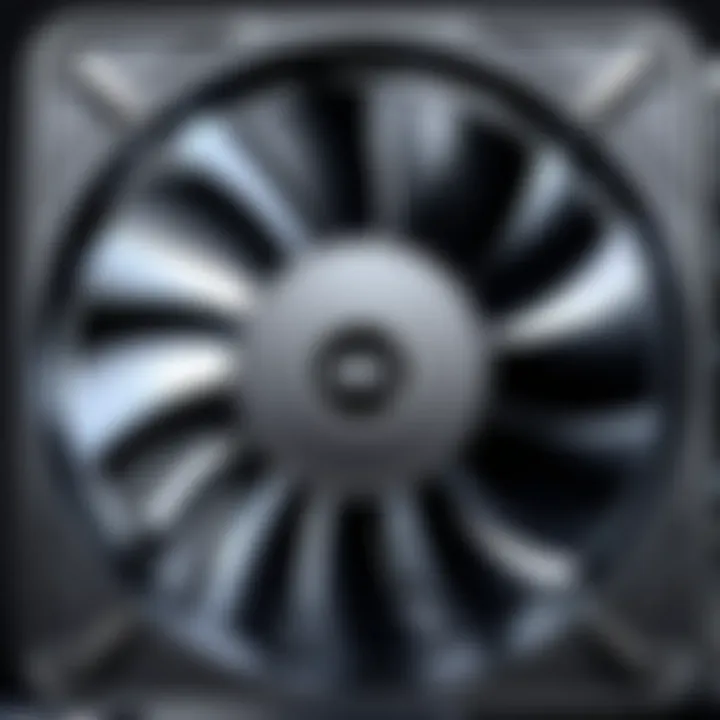
Value for Money: Analyzing Cost-Effectiveness
Ultimately, the goal is to maximize performance without draining your finances. When breaking down cost-effectiveness, consider the lifespan, warranty, and cooling efficiency of the fan. A low-cost fan may seem appealing at first, but it could end up costing more if it requires frequent replacements. Always keep an eye on energy efficiency too; fans that use less power save money over time, making them a smarter long-term investment.
In summary, investing in the right affordable PC fans can make a substantial difference in your setup’s thermal performance, durability, and overall enjoyment of using your system.
Installation and Setup of PC Fans
Getting your PC fans installed effectively is pivotal for achieving optimal airflow and cooling. The way you set up your fans can significantly impact system performance and longevity. An improperly configured fan setup can lead to overheating, which can damage components, affect performance, and shorten the lifespan of your system. Therefore, dedicating some time to properly installing and setting up your fans is crucial for delivering the cooling your setup deserves.
Preparing Your Workstation
Before you start the installation process, it’s important to prepare your workspace. Begin by ensuring that your PC is powered off and unplugged. Taking these precautions helps to prevent any electrical mishaps that could harm you or your hardware. Clear a spacious area to work in—this allows you to organize all components without clutter. Gather the necessary tools, including screwdrivers and possibly zip ties to manage cables afterward.
Take a moment to review the layout of your PC case. Most cases have designated areas for fan installation, whether it's at the front, rear, or top. You should familiarize yourself with these areas and ensure there’s enough clearance for the fans you plan to install. Dust buildup can also be a concern. A little housecleaning might be in order. Dusting out the interior of the case can improve airflow and gives a clean start to your fan installation.
Installing and Configuring the Fans
Now you’re ready to dive into the actual installation. Start with the fans you’ve chosen. Each fan typically comes with its own set of mounting screws and sometimes even rubber grommets to reduce noise. Align the fans with the mounting holes in your case and secure them loosely at first. This helps to ensure alignment is correct before tightening everything down completely.
When you’re placing the fans, pay close attention to the direction of airflow, which is often indicated by arrows on the fan housing. In general, fans mounted at the front of the case should draw air in, while those at the back and top should expel air out. Configuring the fans in this manner creates a positive airflow, maintaining a cool environment inside the case.
After you’ve secured the fans, it’s time to deal with the cables. Neatly route the power cables to the appropriate headers on your motherboard or fan controller. Using zip ties can help keep everything tidy, reducing clutter and improving airflow. Finally, double-check all connections to ensure everything is snug and properly connected.
“A well-placed fan can be the difference between a setup that runs hot and one that stays cool under pressure.”
Don’t forget to power up your system after installation and monitor the fan performance. Listen for any odd noises that might suggest misalignment or that the fans are facing the wrong direction. With careful attention to detail during installation and configuration, your fans can work effectively, helping to keep your system cool and running smoothly well into the future.
Maintenance Practices for PC Fans
Keeping your PC fans in top condition is as crucial as selecting the right model in the first place. Without proper maintenance, even the best affordable fans may fail to deliver the cooling performance you need. Dust accumulation and wear over time can significantly impact air circulation, leading to overheating and reduced efficiency. Regular upkeep not only prolongs the lifespan of your fans but also maintains optimal performance—keeping your system cool and quiet during intense gaming sessions.
Routine Cleaning and Dust Prevention
Cleaning your PC fans regularly is like giving them a breath of fresh air. Dust and debris can settle like unwanted visitors, making fans work harder than necessary. A fan choked with dust will not only run less efficiently but may also create a racket as it struggles to push air.
Here are some proactive steps to ensure your fans stay clean:
- Schedule Regular Cleanings: Consider dusting off your fan components every three to six months, depending on your environment. If you live in a dusty area or have pets, you might need to increase that frequency.
- Use Compressed Air: A can of compressed air is a handy tool. Hold the fan blades in place to prevent them from spinning as you blow air through the vents. This method is effective at dislodging dust particles without causing damage.
- Microfiber Cloths: For stubborn dust, lightly dampen a microfiber cloth and gently wipe the blades and surrounding areas. Avoid cleaning with water or any harsh chemicals that might cause corrosion.
- Vacuum Cleaners: If you have a vacuum with a brush attachment, that can also work wonders. Just be careful not to touch any electrical components directly.
By keeping your fans clean, you're helping to ensure the entire cooling system operates more efficiently and quietly. After all, nobody wants to play a high-stakes game only to be distracted by the sound of a fan that’s fighting against a dust storm.
Monitoring Performance Over Time
Once your fans are sparkling clean, it's essential to keep an eye on their performance. Monitoring allows you to catch any issues before they snowball into major problems. Here’s what you can do to stay ahead of the curve:
- Temperature Checks: Utilize software tools like HWMonitor or Core Temp to check your CPU and GPU temperatures regularly. If you notice rising temps while the fans are working, it could be a sign of deteriorating performance.
- Listen for Abnormal Noises: Any grinding, rattling, or sudden increase in noise levels may indicate failure. Often, the bearings can go bad, leading to less efficient airflow and a lot of frustration.
- Fan Speed Monitoring: Many motherboards come with in-built software to monitor fan speeds. If you notice a sudden drop in RPM, it might be worth checking to see if the fan is clogged or starting to fail.
- Visual Inspections: Occasionally, power down your system to visually inspect the fans. Check for wear and tear, alignment issues, or any signs that the fan is not spinning properly.
Taking a few moments to monitor fan performance can save you significant time and trouble in the long run. Your meticulous attention will guard against overheating and unnecessary system strain, ensuring smooth performance during your gaming marathons.
Keeping your PC fans in shipshape can extend their lifespan and enhance your gaming experience. Simple preventive measures now can lead to greater reliability later.
Troubleshooting Common Fan Issues
When setting up a PC, one of the last things that comes to mind is the potential for issues with your cooling system, particularly the fans. Neglecting to troubleshoot common fan issues could turn your well-built machine into a hot mess faster than you think. Understanding these problems not only extends the longevity of your components but also enhances overall performance. Knowing why these issues arise and how to address them will arm you against pesky overheating and performance failures, keeping your gaming sessions or work hours uninterrupted.
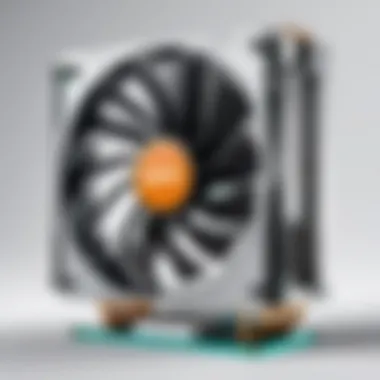
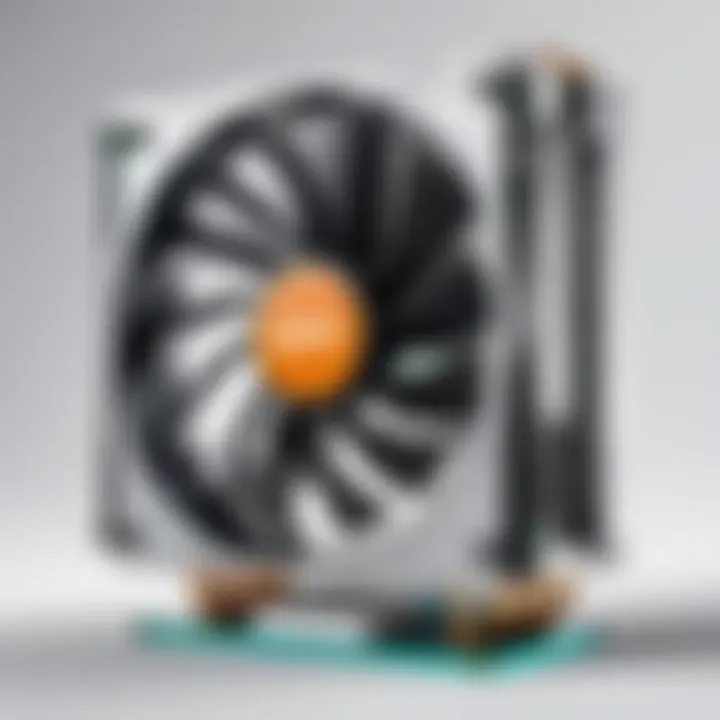
Diagnosing Noise Problems
It’s almost like an unwanted concert in your case when your fan starts to kick up a racket. Fans are inherently designed to be quiet, so any audible noise can often be an indicator of deeper issues. The immediate step is to listen closely. Is it a high-pitched whine? Or does it sound more like a bass drum thumping away? The key is to distinguish between normal operational noise and something more sinister.
Unusual sounds could indicate a few things:
- Dust Build-up: Dust bunnies love to settle on the blades, restricting movement and causing friction. A bit of compressed air can usually clear out the grime.
- Loose Components: Sometimes, fans can come loose from their mounts. Jiggling or vibrations during use can create an unsettling sound. Tightening screws or re-seating can solve this hitch.
- Fan Bearing Issues: If it sounds like your fan is singing a broken tune, it might be time to consider bearing failure. Depending on the model, replacement might just be your best bet.
Solving noise problems not only makes the setup more pleasant but also serves as an indicator that your cooling is functioning correctly.
Addressing Performance Anomalies
So you’ve checked the sound, and now you’re curious about performance. If your PC fan’s performance is lackluster, you’re dancing on a fine line between optimal cooling and potential system failures. Then the question arises: how do you know if your fans are doing their job?
These factors can highlight performance concerns:
- Temperature Readings: Monitoring software can help you keep an eye on temperature spikes. If your CPU or GPU is heating up excessively, your fans could be falling short.
- Fan Speed: Most modern fans come with RPM monitoring. If the numbers are way off what you expect, there might be an electrical issue, or simply a faulty fan.
- Physical Blockages: Sometimes, it’s the simple stuff. Ensure there are no obstructions within the case. Bad airflow leads to poor cooling performance, no question about it.
Addressing anomalies goes a long way in preventing breakdowns. Ultimately, a little bit of troubleshooting paired with a fine-tuned understanding of what’s going on behind the scenes can save you from more serious headaches down the road.
Future Trends in PC Cooling Technology
In the landscape of PC cooling, staying ahead of the curve is vital. As technology advances, so do the methods we utilize for cooling our systems. This section discusses the emerging trends and innovations in PC cooling technology that not only enhance performance but also align with the growing demand for efficiency and smart integration.
Advancements in Fan Technology
Recent advancements in fan technology have led to more power-efficient and quieter solutions. Brushless DC motors are becoming increasingly common, providing better reliability and efficiency. These motors operate without physical brushes, reducing friction and extending longevity.
Moreover, the innovation of fluid dynamic bearings is taking fan durability to new heights. Unlike traditional ball bearings, which wear out faster, these bearings utilize a thin layer of fluid to support the rotor, resulting in smoother operation and lower noise levels. The growth in static pressure fans is also noteworthy, offering higher airflow against resistance, making them ideal for densely packed cases or radiators.
- Key features of new fan technologies include:
- Noise reduction technology that ensures whisper-quiet operation
- Adjustable RPM settings which optimize performance according to real-time temperatures
- Enhanced airflow dynamics for improved cooling rates
These advancements aren't just technical upgrades; they improve user experience significantly, keeping hardware cool under pressure while helping to maintain a peaceful computing environment.
Integration with Smart Systems
Another compelling trend is the integration of cooling solutions with smart systems. Modern motherboards often come with software that allows users to monitor temperatures and control fan speeds, making it easier to respond to overheating issues promptly. This connectivity can be critical in settings like gaming or graphic design, where thermal management is vital for achieving peak performance.
Smart fans, such as the ones from brands like NZXT and Corsair, come equipped with sensors that can detect temperature fluctuations. They adjust their operation based on thermal readings, ramping up or down as needed, thereby optimizing airflow without constant user intervention. This feature not only improves system cooling but also reduces energy consumption.
The rise of RGB lighting in fans offers both aesthetic appeal and functionality. Users can synchronize their cooling systems with other components for a cohesive look, while the added visibility can sometimes help in noticing whether a fan is working as it should.
"In a world where efficiency and performance go hand in hand, embracing smart technology in cooling solutions is no longer optional, it is a necessity."
Overall, the future of PC cooling technology seems bright, with ongoing advancements promising to enhance performance, efficiency, and ease of use. As technology aficionados, being aware of these trends is essential, especially when selecting affordable solutions that don’t compromise on quality or performance.
Closure
In wrapping up our detailed exploration of affordable PC fans, it's essential to emphasize why choosing the right fan is not just a matter of aesthetics or minor improvements. Rather, it fundamentally affects your system's performance, longevity, and your overall computing experience. With the increasing demand for efficient cooling solutions, especially among avid gamers and tech-savvy users, being informed about the best budget-friendly options is crucial.
Recap of Key Points
To tie everything we discussed together, let's highlight a few key elements:
- Role of PC Fans: They maintain optimal temperatures, ensuring components like CPUs and GPUs don’t overheat, leading to system failure.
- Factors for Selection: Noise levels, size compatibility, and RPMs are vital in making a well-rounded decision for your setup.
- Recommended Products: Some models have consistently shown up for their performance and reliability while being gentle on your wallet.
- Maintenance: Regular cleaning and monitoring can significantly extend the life of your fans and improve their efficiency.
- Future Trends: Understand where fan technology is headed, including smart integrations that promise even better cooling solutions.
Final Thoughts on Budget Fan Selection
In a market crowded with options, striking that balance between cost and quality can seem like finding a needle in a haystack. However, honing in on specifics like air movement effectiveness, noise tolerance, and how well they fit into your setup can save you both money and headaches down the line. There is no need to splurge when there are budget models available that perform admirably, often rivalling their higher-priced counterparts.
Remember: A calmly cooled PC ensures stability and enhances performance during prolonged gaming sessions and productivity tasks alike. Choosing wisely not only optimizes your system's performance but also aligns it with your budgetary constraints. Every choice counts, so equip yourself with knowledge before making that leap into the fan market, and your setup will thank you.



